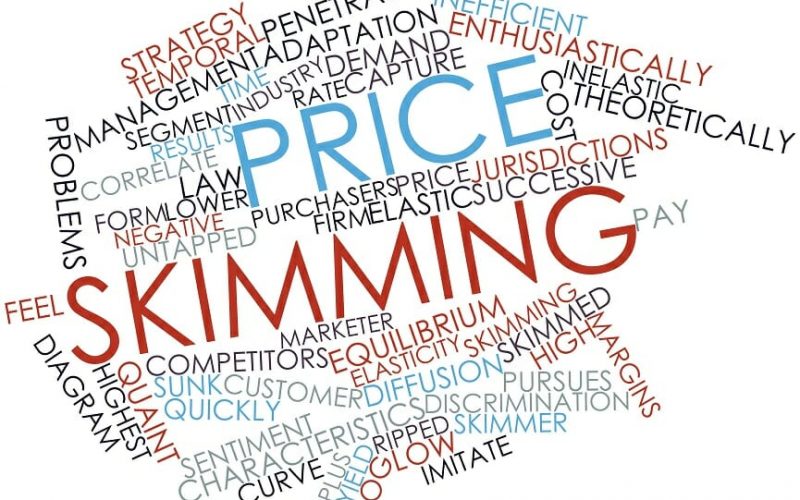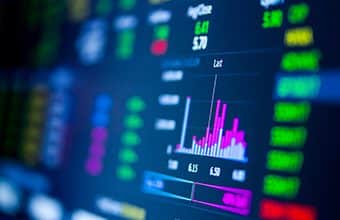Price skimming is one of the more unique pricing strategies you can use to make the most of product sales in the market. Price discrimination in the form of price skimming is a type of pricing strategy. It is thought to be a method of targeting people with varying income levels with the ability to pay. Not all items are appropriate for this technique, so read carefully before using this to on your productd. In this article, we will discuss the meaning, history, examples, benefits, and drawbacks of the price skimming technique. We’ll also see when it may (or may not) be appropriate for your company to use. Trust me, if the price skimming strategies is used wrongly, you may lose your stand in the market.
What is Price Skimming?
Price skimming is a commodity pricing tactic in which a company charges the highest initial price that consumers are willing to pay for a product and then gradually lowers it. When the firm’s first customer demand is met, and competition reaches the market, the price is reduced to attract a new, more price-sensitive segment of the population. The skimming strategy derives its name from the process of “skimming” successive layers of cream, or consumer segments, as costs are reduced over time.
How Does Price Skimming Work?
The idea behind price skimming strategies is simple-maximize profits especially when it is a new product with little or no competition. Mostly we hear about price skimming when a product enters the market and the target customers’ demand is high.
Prices are high at the launching of the product and only decrease to meet the market demand after some time. Also, the price decreased to ward off competitors. Finally, this strategy applies where a high price is seen as high quality, producers desire to recover the cost of production, there are existing buyers of such products, and so on. This simply means it does not apply to every product.
Reasons For Price skimming
Although an overly competitive product will not survive with the price skimming strategies, companies and organization still use it to their advantage. What necessitates this use?
#1. New Edge Products
These are mostly new innovative products still in the first stage of a product life cycle. They usually have an advantage over other existing products. Apple are quite skilled at using the price skimming strategies in launching any of their new product.
#2. Product Life Cycle
Another reason why companies use this pricing strategy is as a result of the product life cycle. When a product life cycle is unusually short, then the product price can be tempered with no negative feedback
#3. Buyers’ Desire
Primarily the law of demands depicts that demands decrease when the prices of products are high but ostentatious goods are the reverse of this statement. Buyers’ desire to own ostentatious goods that depicts their lifestyle will keep influencing the purchase of certain goods that are unnecessarily priced. So the price skimming strategies is perfect for ostentatious goods such as sport care, gold and luxury items and so on.
The Benefits of Price Skimming
Some of the benefits of price skimming strategies include the following;
#1. It has the potential to boost early sales
Companies that use price skimming strategies do so to recoup investments as soon as possible and deliver as many goods as possible at the highest price point the commodity is likely to see. This immediately increases sales and benefits, which the business will use to expand marketing and distribution and fund R&D expenses. For product that have little or no competition, companies uses price skimming as a strategy to increase its revenue.
#2. It may aid in the development of buzz.
When combined with a slow deployment approach, the skimming pricing strategy works well. Companies who use price skimming realize that their market share would be limited at first. However, as the price decreases, the desire to obtain the commodity at a lower cost increases.
Consumers and businesses alike eagerly await the opportunity to buy such goods when the price is right. This is particularly when they cannot afford it at first. It’s a classic case of “you still want what you can’t have”. However, with a good skimming technique, you may be able to get it a few months later.
#3. You can make changes to prices over time
One of the most significant advantages of a well-executed skimming pricing strategy is the ability to adjust the price as the demand changes. Starting with a high price, you will decide how price sensitive your customers are. You then offload as much inventory as possible while maintaining the highest profit margin. From there, it’s up to you to decide when the price will drop and where you’ll drop to. This gives you full leverage over the pricing model. Thus it allows you to change your selling price based on market conditions and customer actions as you see fit.
#4. It will benefit your brand
Because skimming is a relatively uncommon approach in the grand scheme of daily purchases, using it effectively can create a specific perception of your brand by the market.
Ingenious. Future-oriented. One of a kind. Brand new. It’s revolutionary. Preeminent.
Both of these words are often correlated with goods launched with a price-cutting model. If that is the picture you want for your company, price skimming might be the best option for your product.
The Drawbacks to Price Skimming
#1. You can annoy early buyers
Technophiles looking for the “next big thing” or those who spend more money than necessary to purchase your product might be frustrated.
What is the rebuttal to this? Price skimming is a well-known strategy in many sectors, including technology. Although early adopters may be angry when the price drops, they typically know what they’re getting into. Also, they are willing to pay more to be the first to get their hands on the commodity.
#2. It has the potential to backfire when it is least anticipated
I don’t know about you, but I usually wait a few months after the launching of a new iPhone before considering purchasing it. This is because I know that the price would almost certainly fall after the initial hype has died down.
What is the moral of the story? If the skimming strategies becomes the standard, it will negate the intent of the pricing in the first place. Many consumers will prefer to wait to buy if they know the price will soon fall.
This could jeopardize your rollout plan and limit your sales during the initial pricing surge. As a result, if you anticipate buyers reacting in this manner, it makes sense to use price skimming sparingly.
#3. It cannot last indefinitely
When a competitor company sees how much money can be made on a product, they will frequently swoop in with a similar product at a lower price. This leaves you with two options: keep your price the same and hope that its prestige and quality will keep your sales unaffected, or lower your price earlier than planned to stay competitive.
Remember that even if there is no competition, there will be a limit to the number of people you can feasibly sell to at each price point. Price skimming will eventually force you to lower your prices, so keep that in mind when making sales projections
#4. It may harm your brand
Price skimming can help your brand in a variety of ways, but it can also harm it. Companies that engage in price skimming may appear greedy, dishonest, or manipulative. Thus, it reinforces the notion that price skimming should not be used by all businesses or for all products.
Price Skimming Examples
Despite the obvious appeals of price skimming as a model, it requires a variety of factors to be in place for it to be truly successful. Let’s look at some price skimming examples and see what situations are best for this pricing technique.
#1. The most recent iPhone
While this is not exclusively SaaS, Apple’s market approach to product pricing is a good example of price skimming in a way that almost all can know. Apple’s prices for newly launched goods seem to be so high that they’re almost dissuasive for each new product offering. However, there are still lines outside Apple stores on iPhone release days
This is because Apple checks all of the boxes required for price gouging to function, including the following:
- It already has a large number of consumers who regard the brand as extremely reputable and appealing.
- It does not have any direct competitors that can undercut them.
- They use high pricing to signal the higher quality of its latest product, which is supported by the rest of its product lineup ( the components of which are all at various later stages of the skimming cycle).
- Its projected sales volume is so high, as is the rate at which new products are created, that lowering prices during the skimming period would have little or no impact on its overall sales volume.
- Unit costs aren’t a big deal for a business the size of Apple.
- As a result, Apple is in a position to maximize the advantages of price skimming. The company’s command of so many successful product releases, as well as its accompanying price-cutting policy, is aspired to by every technology company.
#2. Salesforce
Salesforce was a major example of the SaaS price-skimming theory. To power its pricing strategy, the company caused a complete paradigm shift in the SaaS industry. Salesforce was the first organization of its kind to make its CRM available 24 hours a day, seven days a week through the cloud. Salesforce was a prime example of a company whose technology justified a price skimming policy due to the radical nature of its cloud product.
Salesforce’s upper tiers of its market—which, in B2B SaaS terms, means enterprise-level deals with large companies—enabled it to generate a large amount of revenue quickly. It was later able to scale down to fit smaller companies that still wanted to use the cutting-edge CRM. Even now, as CRMs have become more popular in the market, few businesses have used skimming in the aftermath of Salesforce’s successful strategy.
When Does (and When Doesn’t) Price Skimming Make Sense?
Let’s look at some market scenarios in which price skimming could (or might not) work.
Does make sense: emerging innovations.
From the DVD player to the tablet, and even the smart TV and Teslas — genuinely innovative technology devices like these are almost always accompanied by a low pricing model. When the price decreases, the market as a whole appears to be excited rather than annoyed.
It just doesn’t make sense: B2B SaaS.
Most B2B SaaS businesses want to develop their user base as quickly as possible to generate recurring revenue. Limiting the growth potential via sticker shock will harm the early foundation and limit compounding growth potential.
Instead, B2B SaaS companies may choose to use penetration pricing or freemium pricing to acquire users at a low cost and gradually raise revenue from those customers later on through added-on services, account users, or increased pricing.
Clothing and fashion (makes sense).
Fashion and clothing stores are notorious for changing their prices seasonally to reflect the introduction of new trends. Using price skimming to keep the price tag high at first and then shifting the item to the sale rack when the time is right is a perfect tactic for this market, according to that logic. Since most clothing stores only produce a limited number of each style, price skimming works well here. It is the perfect model for consistently changing prices until all of the inventory has been sold – with each piece of clothing being sold at its maximum potential price.
It doesn’t make sense: Goods with a high level of competition.
If you’re entering a highly competitive market with an undifferentiated commodity, a high-priced markup is probably not the best option. In essence, you’re not demonstrating any competitive advantage or incentive for consumers to select you.
Try competition-based pricing, penetration pricing, or value-based pricing instead.
It makes sense: Automobiles
New car dealers, like clothing shops, are constantly turning over new inventory and attempting to sell each year’s model before the next year arrives.
Demand is strong during the first month of a new car’s availability, so you can justify keeping the price high as well. However, as months 11 and 12 pass, car dealers and consumers are aware that the sale price will be significantly lower.
Dealers will use this tactic to provide customers with a brand new vehicle at a lower cost when accounting for the lost markup in previous sales.
Contracting, consulting, and technical services (doesn’t make sense).
Professional services, such as medical, legal, or advisory services, have lower demand than goods that profit from price skimming. Furthermore, it makes no sense for these types of jobs or firms to reduce the prices of their services while they progress in their careers. Instead, project-based or hourly pricing models can benefit these businesses the most.
Price Skimming VS Premium Pricing
While price skimming and premium pricing are types of pricing strategies, they are both distinct technique that serves different purposes. The Premium pricing is a marketing strategy that entails strategically pricing your company’s product more than your direct competitors. While price skimming is a strategy that companies used to sell a product high at its launch and then lowers it over time. So let;s get on with comparing these two.
Price Skimming VS Premium Pricing: Similarities
Price skimming and premium pricing are used by companies who has one thing in common. A brand name that has high authority in the market. These are companies who believe that their brand name convince people to buy their products. Because they had succeded in building customers loyalty. Both provides the advantages of generating better profit margins, erecting higher barriers to entry for competitors, and raising the brand’s value across the board.
| TERMS | PRICE SKIMMING | PREMIUM PRICING |
| DEFINITION | Price skimming is used by business at the initial launch of its product | Premium pricing is a strategy that businesses use to sell a product for more price that their competitors. |
| OVERTIME | price of product reduce after its launch | Price of product remains higher than that of their competitors. |
| GOAL | The goal of price skimming introduce the product | The goal of premium pricing is to create a perception in the market that your product is just a little bit better than the competition. |
When Does Price Skimming Occur?
The pricing strategy will be influenced by the product’s life cycle stage. The practice of charging a disproportionately high price for a product is referred to as price skimming. When a product is fresh to the market (in its introduction or growth period) and has few competitors, skimming is frequently utilized.
Which Form of Pricing Is the Best?
One of the finest pricing techniques for retail businesses is the cost-plus strategy. They may impose a variety of markups depending on the products sold. However, because the product price is substantially greater than the product cost, this is not good for businesses like software service providers and music producers.
What Pricing Strategy Is the Simplest?
The simplest technique of establishing price is cost-plus pricing, which encapsulates the fundamental principle of conducting business. You create something, then sell it for more money than you spent doing it (since your product has a higher worth as a result of your creation).
Which Pricing Strategy Makes Use of Skimming?
Price skimming is a method of product pricing in which a company sets its starting price as high as its target market would bear before gradually lowering it.
What Does Markup Pricing Entail?
The markup is the proportionate difference between the product’s selling price and its unit cost. By deducting the unit cost from the sales price and dividing the resultant amount by the unit cost, you may get a product’s markup. The markup % is then calculated by multiplying the final result by 100.
Summary
After weighing the pros and cons, we can conclude that price skimming is an effective strategy for pricing a novel new product, as long as you avoid the pitfalls. Be vigilant when setting high initial prices and gradually lowering them, as the wrong move or sudden price drops will result in the dreaded PR backlash.
Analyzing and comprehending what consumers value about your offering will assist you in determining the true essence of the demand curve and the feasibility of executing a price skimming strategy.
Skimming will bring in the money you need to rapidly recoup production costs, continue upgrading the product, and ensure the longevity of your company as long as there are few rivals in the market and you communicate the price reductions effectively.
Price skimming FAQs
How do you use price skimming?
Price skimming, also known as skim pricing, is a pricing strategy in which a firm charges a high initial price and then gradually lowers the price to attract more price-sensitive customers. The pricing strategy is usually used by a first mover. The first-mover advantage who faces little to no competition
Is skimming pricing illegal?
Is Price Skimming Legal? Price skimming by itself is not illegal but can be construed as unethical in certain cases.
What is the opposite of price skimming?
Pricing for market penetration is essentially the opposite of price skimming. Instead of starting high and slowly lowering prices, you take over a market by undercutting your competitors.
What is the difference between price skimming and penetrating price?
A penetration pricing strategy is one in which the price of the product is set low at the time it is launched to draw a greater number of customers. In price-skimming, however, the price of the product is high in the beginning so that maximum profit is attained by targeting the cream of the market.






